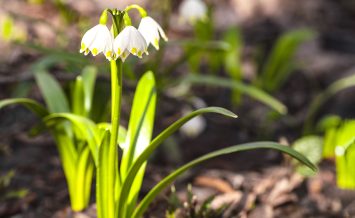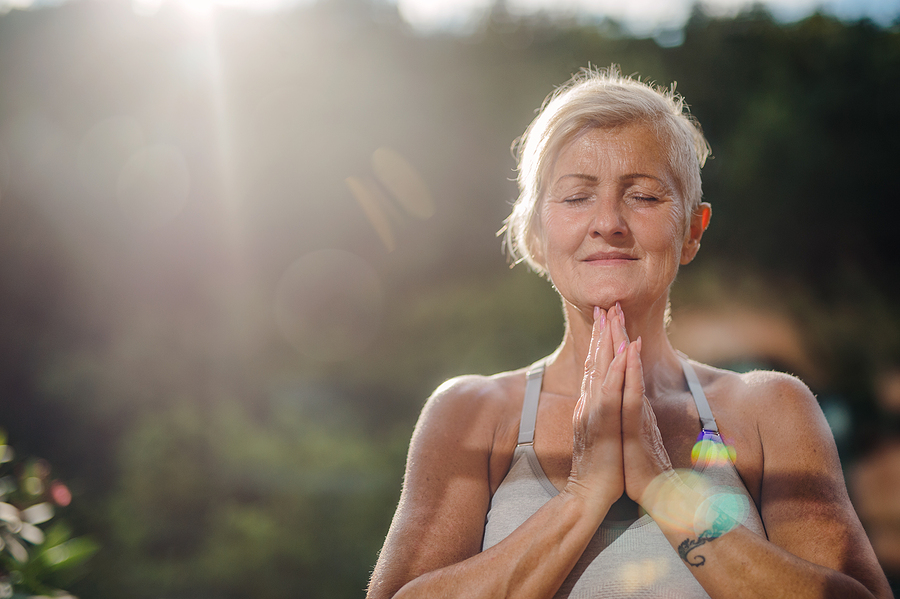The best kinds of Yoga to practice in your 50’s and beyond
As we age, it’s common for our bodies to become less flexible, making it important to choose a form of yoga that is gentle and supportive.
Here are some types of yoga that are particularly well-suited for older adults:
- Gentle yoga: A slow-paced form of yoga that emphasizes gentle movements and deep breathing, making it ideal for seniors who are new to yoga or have limited mobility.
- Kundalini yoga: A spiritual form of yoga that focuses on awakening the dormant energy at the base of the spine and guiding it upward through the chakras to reach the crown of the head.
- Restorative yoga: A calming and relaxing form of yoga that uses props such as bolsters and blankets to support the body in passive postures.
- Chair yoga: A form of yoga that is performed while seated in a chair, making it accessible for seniors who may have difficulty with standing postures.
- Chakra yoga: A holistic practice that aims to harmonize the mind, body, and spirit, and to promote health and well-being. It is believed that by balancing the chakras, we can improve our physical, mental, and emotional health, as well as deepen our spiritual connection.
- Yin yoga: A gentle form of yoga that involves passive, floor-based postures that are held for several minutes to promote deep stretching and relaxation.
- Yoga Nidra: Also known as “Yogic Sleep” it is a form of deep relaxation and meditation that involves guided visualization techniques and body scans to reach a state of peace and rejuvenation.
These types of yoga are specifically designed to be accessible and gentle, promoting flexibility, balance, and relaxation. It is always recommended to speak with a healthcare provider before starting any new physical activity to ensure that it is safe and appropriate for your individual needs.
Kundalini Yoga
Kundalini yoga is a spiritual practice that originated in ancient India. It is a form of yoga that combines physical postures, breathing techniques, meditation, and mantras to awaken the energy at the base of the spine, called kundalini.
The goal of this practice is to activate this dormant energy and bring it to the crown of the head, which is said to bring spiritual enlightenment and a range of physical and mental benefits.
Kundalini yoga is often described as a fast-acting form of yoga and is considered by some to be one of the most powerful forms of yoga. It is generally considered safe when practiced under the guidance of a qualified teacher, as the awakening of kundalini energy can sometimes cause intense physical and emotional experiences.

Kundalini yoga offers a wide range of benefits, both physical and mental. Some of the benefits include:
- Increased energy and vitality: Kundalini yoga can help increase energy levels, boost physical strength and flexibility, and improve overall health and wellness.
- Stress relief: This type of yoga can help reduce stress and anxiety by calming the mind and releasing tension in the body.
- Improved mental clarity: Kundalini yoga can improve mental clarity and focus, promoting a more calm and centered state of mind.
- Increased spirituality: By awakening the kundalini energy and connecting to the divine, practitioners can experience a greater sense of inner peace, joy, and spiritual connection.
- Improved emotional well-being: Kundalini yoga is believed to help release emotional blockages, leading to greater emotional stability, happiness, and resilience.
- Physical healing: Kundalini yoga is said to stimulate the body’s natural healing abilities, promoting the overall health of the physical and emotional self.
- Increased self-awareness: This practice can help individuals become more aware of their thoughts, emotions, and actions, leading to greater self-awareness and self-growth.
Yoga Nidra & Yin Yoga for relaxation
Yin yoga and yoga nidra are both practices that emphasize deep relaxation and meditation, but they are different in their approach and goals.
Yin yoga is a slow-paced form of yoga that involves passive, floor-based postures and deep stretching. The focus of yin yoga is to target the connective tissues, such as the tendons and fascia, and increase flexibility and range of motion in the joints. The practice is also said to promote circulation and stress reduction, and improve balance and stability and can help to improve sleep and promote restful nights.

Yoga nidra, on the other hand, is a form of guided meditation that involves visualization techniques and body scans to reach a state of deep relaxation and consciousness. The goal of yoga nidra is to reach a state of deep peace and rest, where the mind is completely relaxed and the body is in a state of rest. Yoga nidra is said to be effective in reducing stress, promoting physical and emotional healing, and inducing a state of deep rest and rejuvenation.
Yin yoga is a physical practice that emphasizes deep stretching and relaxation, while yoga nidra is a meditative practice that involves guided visualization and body scans to reach a state of deep relaxation and rest. Both practices can be beneficial for reducing stress, promoting physical and emotional wellness, and inducing deep relaxation, but they differ in their approach and goals.
Have you tried yoga?



















